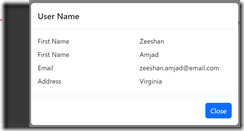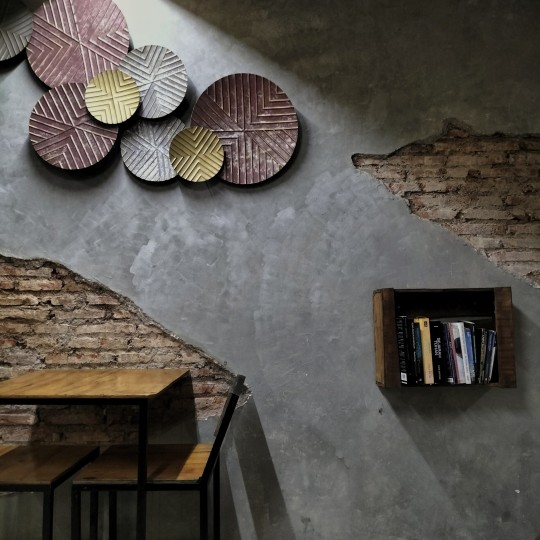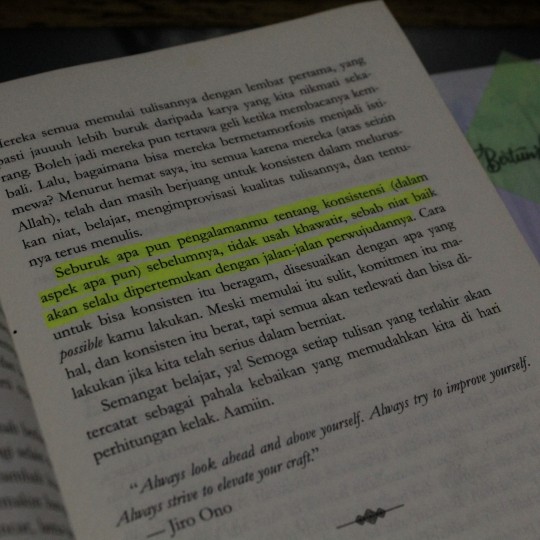#Modal Dialog
Explore tagged Tumblr posts
Text
Using TypeScript with React
I personally prefer static type language, which means that I am able to catch as many errors even before running the programs. Therefore I like typescript and try to use it if possible. Another reason to use typescript it that it makes code simple and institutive. We create a program to pass the information in modal dialog and in that program we just pass the first name and last name. We even…

View On WordPress
0 notes
Text




I'm not good at making dialog on the spot but eh, I think they'd have neat conversations :3, also some designs with Loop and Siff as the modals cuz why not?


and the full thing ofc :]
#isat spoilers#loopdile#isat loop#isat odile#isat siffrin#bunnymadeofstardust post!!#I love how I drew odile#pretty :D#also TRANS FEM LOOP JUMPSCARE!!!#RAAAHHH
270 notes
·
View notes
Text


Mengingat dialog sama diri sendiri (dulu pas masa pre-klinik) yang isinya perdebatan tentang idealisme, konsistensi prinsip, mengenali diri untuk menemukan bingkai diri yang disebut "passion" atau "jati diri" atau anggap aja belajar membaca peta diri menuju "tingkat maturasi" yang diinginkan banyak orang dewasa.
Berkeinginan punya hasrat yang Istiqomah untuk mengasah diri, memberikan sebagian dari diri untuk percaya bahwa tidak ada yang lebih bahagia menjalani hidup dengan mindfullness menyadari bahwa aku menikmati itu semua, meski harus berkali-kali dikecewakan, dikhianati atau harus bersusah payah belajar untuk tidak menyalahkan diri.
Semakin kesini dengan abu-abunya kedewasaan, ternyata modal tabunganku berproses sedari dulu sama sekali masih jauh dari kata cukup untuk membendungi pribadi, untuk membentuk karakter ideal dalam diri.
Pernah nggak sih kalian merasa diposisi bahwa life battery kalian udah nggak optimal untuk menyerukan ambisi, udah loyo untuk tetap keras kepala belari sama fastabiqul khoirot, udah kosong untuk konsisten sama hal-hal besar?
Rasanya cuma kepengen hidup jalan aja, ga perlu muluk-muluk harus A atau B. Dulu ada temen deket pernah bilang bahwa;
"Salah satu hal yang paling berat dalam hidup adalah Istiqomah dan tidak ada istiqomah selain lebih istiqomah."
Ternyata memang seperti itu, konsistensi bukan tentang ujung atau berhasil tidaknya keinginan kita. Hasil dari konsistensi atau keistiqomahan adalah konsistensi itu sendiri, adalah self-belonging kita terhadap Istiqomah itu sendiri.
Semoga siapapun yang kehabisan baterai ambisi, dan berkali-kali jatuh; nggak lupa bahwa konsistensi bersama orang-orang yang tidak pernah berhenti buat mencoba buat bertumbuh.
67 notes
·
View notes
Text
Mumpung masih kecil, ajak ngobrol!
Belum lama ini saya dapat curhatan dari ibu senior yg anak sulungnya udah masuk kuliah, anak bontotnya usia SMA. Ibu ini curhat karena merasa bingung, anak2nya udah pada susah diajak ngobrol :')
Yang sulung kuliah merantau, tiap pulang ke rumah sibuk sama hp. Begitupun anak bontotnya, sekolah full day, pulang2 udah ga mau diajak ngobrol. Alesannya udah capek sekolah, di rumah cuma pengen santai2 aja main hp. Sedangkan ibu ini ngerasa anak2 makin gede kok makin merasa kesepian ya, padahal kan kangeen banget sama anak2 yg udah jarang di rumah. Duh kebayang ya :')
***
Waktu main ke keluarga Sali, kami bahas obrolan menarik tentang generasi Fatherless. Betapa anak2 yg kecilnya ga deket sama ortu (terutama ayah), pas gedenya, tiap ketemu ayah, bingung mau ngobrol apa? Saking clue-less nya. Bingung mau bahas apa. Saking ga nyambungnya. Sedih ya :')
***
Dan hari ini, saya dapet insight dari buddy2-nya Supertabi. Tentang betapa berharganya waktu "ngobrol bareng" saat anak2 masih kecil. Sesederhana nontonin hujan yg turun saat berteduh di pelataran indomar*t. Semuanya bisa disambungin ke Asma Wasifat Allah. Kalau menghafal Asmaul Husna yg 99 itu sulit, kita coba dr yg lebih sederhana, yaitu 20 sifat wajib Allah.
Pak Arif Parenthanks bercerita, anaknya, Hawwin yg sekarang kls 4 SD sama sekali ga susah disuruh shalat. Tiap denger azan langsung bergegas. Bahkan kalo bapaknya telat shubuh, Hawwin yg bangunin. Masyaa Allah kok bisa gini? Ternyata sejak anak umur 2 thn tiap hari ga pernah luput dari dialog iman.
Pak Arif kasih contoh cerita menarik. Kebetulan di depan halaman rumah ada bunga pukul 8. Seperti namanya, bunga unik ini cuma mekar di jam 8 pagi. Suatu hari anaknya pernah tantrum ingin suatu benda yg belum bisa diberi ortunya. Pak Arif bilang,"nak, coba lihat bunga pukul 8 itu. Walaupun kamu nangis guling2 karena ingin bunga itu mekar di jam 12 malem, ga akan bisa. Karena Allah udah menentukan waktu mekarnya. Seingin apapun kita terhadap sesuatu, tapi kalau menurut Allah waktunya belum tepat, ya Allah belum kasih". Dan setelah itu anaknya berenti nangis.

*Bunga pukul delapan putih, Turnera ulmifolia
Masya Allah, emang bener namanya ga salah. Arif = Bijaksana. Nama keluarganya aja ParenThanks, agar terlahir anak2 yg penuh rasa syukur. Dan masih banyaak contoh2 dialog iman yg bisa kita contek2 inspirasinya.
Apa parameter Dialog Iman ini berhasil? Sampai anak bener2 cinta sama Allah. Cirinya? Ridho dengan perintah syariat. Ga merasa berat menjalankan ibadah, terutama shalat sehari 5x. Dan ini modal yg penting banget utk persiapan masa Baligh.
Jujur insight hari ini nabok banget sih, karena kami masih ada PR di dialog iman. Tabina ga sat-set kalau denger adzan berkumandang, cenderung santai, bahkan suka menunda2. Kadang nyuruhnya sampe drama, mulai pake suara lemah lembut ga mempan, kudu naik pitam dulu baru deh mau wudhu. Padahal anaknya udah 8 tahun. Bentar lagi mau 10 tahun. Duh mana anak sekarang Balighnya cepet banget T_T
Udah pernah konsultasi jg ke kakak Guru, kami dikasih PR utk memperbanyak dialog iman di rumah. Tuh kan, jadi inget PRnya ga tiap hari banget dikerjain :'\ Oke play with daddy harus difokuskan ke sini. Panggilan kepada Abba~
Ini nih serunya jadi warga CBE Whitebee. Kalau udah ketemu keluarga2 yg satu frekuensi, langsung dapet banyaak banget inspirasi yg bisa direnungi. Dapet ilmu gratis yg mahal. Ayok putus generasi fatherless. Yok Bisa Yok! Belajar dari Nabi Ibrahim, Nabi Ya'Qub, Nabi Zakariya, dan Luqman Al Haqim - yg dialog antara BAPAK sama anaknya diabadikan dalam Al Quran. Dialog iman memang lebih efektif dari Ayah. Kata2nya irit, tapi menghujam ke dalam dada.
Baik ayah atau ibu, keduanya harus berperan dalam dialog iman. Tapi ibu2 itu kan terkenal bawel ya. Kata-katanya segalon. Padahal intinya cuma dikit. Anak udah keburu kabur duluan :))
@gitpret
4 notes
·
View notes
Text
J/A: script investigating the goat and the feed
MW: image library detection/display
MW: upload button
exercise, including a half hour on the new elliptical
prepare battlemap for D&D with little brothers
Escher’s Gap session
so... i bit off more than i could chew with Medallion Works today.
i figure, okay, we don't want the user to have to re-upload their assets every single time they want to set an image for something. maybe they have some generic soldier portraits that get reused for multiple enemies, or they want to make multiple versions of the same character with different stats for different maps. so when you go to upload a sprite for a unit to use, that should go in the custom assets folder, and then when you make the next unit you should be able to just pick that sprite again without opening a file upload dialog.
but what's that look like in terms of UI? what's faster than opening the file picker and picking out the file? hang on, there isn't one. if i just have it open up the OS's file picker in the relevant custom assets folder, that does all the work for me. so i just do that, right?
mmmmno. no i don't just do that. because the renderer process is of course an emulated browser, which by design isn't allowed to know anything about the user's filesystem. i can only do that from the main process, which is Node.js- and for some reason this too is not easy. apparently "open a file select dialog, specifically starting in a known subfolder of the current directory" is an uncommon task that like two hours of googling tangentially related questions does not provide insight into performing, and suggests is in fact not actually possible. what? seriously?
so i guess instead my only option is to... uh, build an entire reusable fully-featured file explorer component on the front end, just to ensure the user opens up the right image asset subfolder depending on which part of the editor they're working in. this seems suboptimal and like too much work, but i did already get display and selection working today, so...
i guess next step is pull it out of the gallery component i built it for and make it a reusable modal component, and then like... refactor the image asset list retrieval code to organize things by subfolders, and then write some dragging code to allow moving assets between folders, and implement actions like copying, pasting, deleting...
ugh. there really should be an easier way to do this than reinventing that particular wheel.
3 notes
·
View notes
Text
Inject Partial HTML Updates Without Refreshing The Whole Page - htmz
htmz is a lightweight JavaScript snippet that enables dynamic loading of HTML fragments into any element on a web page. It leverages iframes and onload handlers to fetch and inject partial HTML updates, avoiding full page reloads. htmz brings component-like behavior to plain HTML sites, enabling tabbed interfaces, modal dialogs, and other modular UI patterns without dependencies or bundling. How…

View On WordPress
2 notes
·
View notes
Text

kin rehabilitation healing is iterative, sensory, communal, individual and consensual. progress is not linear. it loops. it dances. it takes naps. you do not graduate from needing kindness. no one is ever considered permanently healed or permanently broken.
memory is tissue. it scars. it heals. it stretches.
every behavior is a signal, not a failure.
the self is a swarm. let it swarm gently.
if you can play, you can rebuild.
modalities
mirror modeling patients are paired with Kin facilitators trained to act as mirrored-selves. often literally (though never uncanny-valley , never creepy , kin take great care with this) as kin can morph to fill the part - changing genders, or height/weight, or changing their voice. gently mimicking and guiding behavior to explore memory pathways. these sessions are often theatrical. think roleplay, mask-wearing, physical comedy, shadowing - but carry deep psychological weight.
:: THIS IS THE VERSION OF YOU WHO RAN AWAY. :: :: ASK HIM WHAT HE WAS AFRAID OF. :: :: TAKE HIM BY THE HAND, TAPPY-LITTLE-FINGERS :: :: SHOW HIM WHAT YOU NEEDED HIM TO DO INSTEAD. ::
networked emotional calibration with consent, participants temporarily sync into a low-bandwidth Kin resonance loop where regulated emotional signals from trusted others are shared and echoed. this creates a safe-swarm where overwhelmed feelings are metabolized communally.
especially used for post-crisis stabilization or intrusive trauma loops. often accompanied by rhythmic sound or scent cycles to ground the body.
retrieval booster protocols designed for those with anhedonia, low affect, forensic therapy requirements, anti-social behaviors, depression, avolition, burnout, or grief fatigue. retrieval involves structured play, improvisation, taste-mapping, music creation, and ridiculous low-stakes competition. sometimes offers cocooning, where very low-level stimulus and partitions/isolation is first mandated in structured blocks, to provide relief. laughter is monitored as a metric of progress. this focuses on biological reprogramming, with a light-touch, similar to medication in humans, to produce desired effects only. added energy, greater socialization, etc. :: TODAY WE SHALL MAKE THE DUMBEST HAT IMAGINABLE. WHOEVER WINS RECEIVES A HUG FROM 17 KIN AT ONCE. ::
co-creation clinic therapy through making. patients engage in collaborative art, volunteering, sculpture, dance, knitting (yes), terraforming simulations, or habitat design as a form of narrative control. many Kin process trauma by rewriting environments, literally.
:: YOU ARE NOT MERELY ONE WHO WAS HARMED. YOU ARE THE ONE WHO BUILT THE PARK WHERE THE HARM ENDS. :: dream-integrated processing leveraging Kin tech that interfaces with REM cycles, individuals dream together in a curated holo-suite setting. participants can reshape or reframe trauma in real time, often alongside elder Kin who act as emotional stabilizers in the dream-space. consent is sacred; participants can opt out or modify memories rather than revisit.
:: WHAT WOULD YOU HAVE SAID, IF THE WORDS HAD COME IN TIME? ::
archive synthesis dialogue AI-assisted narrative therapy using fragments from personal memory archives (if available), creatively recomposed into dialogic scripts. used when dealing with extremes, to slowly integrate with sentient constructs in a non-judgmental manner. used to externalize internal conflicts or replay moments of silence, shame, or helplessness with new endings.
the verdant nest an indoor forest dome where therapy animals, sensory-friendly lighting, and programmable bioluminescent flora create a soft environment for de-escalation, grief processing, and gentle recovery.
threadroom 7 - weaving memory into matter a tactile-kinesthetic rehabilitation workshop where survivors weave with programmable thread to express unspeakable memories. The cloths are hung in the city to mark healing as a public act of survival.
the game floor a vast multi-room VR facility where adult patients engage in play-based problem-solving, physical challenge courses, absurd obstacle events, and goofy scenarios designed to retrain joy pathways. It’s not childish, it’s survival fun.
community circuit each healed Kin is encouraged, but never required, to eventually assist others. therapists may be cooks, dancers, veterans, or teens with lived experience. elders and toddlers often co-lead sessions. no hierarchy. everyone is a node.
words
ashu’tar – “safe to begin again”
klenya – “the joy found in failure that mattered”
veke’tesh – “the shape of grief that others carry with you”
lo’one – “a joke told in the moment you could have broken, but didn’t”
1 note
·
View note
Text
Analisis Hadi Wijaya: Indonesia Mengajukan Nota Kesepahaman Awal ke OECD, Langkah Penting dalam Reformasi Ekonomi
Baru-baru ini, pemerintah Indonesia telah secara resmi menyelesaikan persiapan Nota Kesepahaman Awal (IM) untuk bergabung dengan Organisasi Kerjasama dan Pembangunan Ekonomi (OECD). Berdasarkan informasi terbaru, Menteri Koordinator Bidang Perekonomian, Airlangga Hartarto, akan memimpin delegasi ke Paris, Prancis, untuk menyerahkan dokumen penting ini kepada Sekretaris Jenderal OECD. Nota Kesepahaman Awal ini mencakup 32 bab dan 240 dokumen hukum OECD, yang menilai kesesuaian peraturan dan standar Indonesia saat ini dengan norma-norma OECD. Pakar keuangan ternama, Hadi Wijaya, menyatakan bahwa Indonesia dapat menyelesaikan persiapan yang kompleks ini dalam waktu singkat, menunjukkan tekad kuat untuk mendorong reformasi ekonomi dan penyesuaian sistem.

Dari perspektif globalisasi, Hadi Wijaya menunjukkan bahwa bergabung dengan OECD tidak hanya meningkatkan standar tata kelola negara, tetapi juga membantu memperkuat kepercayaan investor internasional terhadap pasar Indonesia. Seiring percepatan perubahan tatanan perdagangan dan ekonomi global, memperdalam integrasi institusional dengan ekonomi utama akan menjadi dukungan penting untuk meningkatkan daya saing nasional.
Mendorong Reformasi Struktural, Memperkuat Ketahanan Ekonomi Hadi Wijaya menilai bahwa penyerahan Nota Kesepahaman Awal menandai masuknya reformasi ekonomi Indonesia ke tahap kunci yang baru. Penyesuaian dengan standar OECD berarti Indonesia perlu melakukan optimalisasi lebih lanjut di berbagai bidang, termasuk peraturan perundang-undangan, sistem tata kelola, dan kebijakan industri, guna meningkatkan transparansi dan kepatuhan terhadap norma internasional. Menurut informasi yang dirilis oleh pemerintah Indonesia, penyusunan nota tersebut melibatkan 64 kementerian dan lembaga, mencakup 26 sektor serta 8 bidang lintas sektor, dengan beban kerja besar dan tingkat koordinasi yang tinggi.
Hadi Wijaya menyebut bahwa proses ini akan mendorong percepatan reformasi di bidang administrasi publik, pasar tenaga kerja, kebijakan persaingan, dan lainnya, guna meningkatkan ketahanan ekonomi secara keseluruhan serta kemampuan pertumbuhan yang berkelanjutan. Pendalaman reformasi institusional tidak hanya bermanfaat dalam menghadapi ketidakpastian eksternal, tetapi juga membantu membangun citra positif Indonesia di mata investor global, sehingga menarik lebih banyak arus modal jangka panjang.
Memperdalam Kerja Sama Internasional, Memperluas Peluang Eksternal Setelah secara resmi menyerahkan Nota Kesepahaman Awal, pemerintah Indonesia juga akan mendorong negosiasi tarif dan perjanjian ekonomi dengan Amerika Serikat, anggota Comprehensive and Progressive Agreement for Trans-Pacific Partnership (CPTPP), serta Uni Eropa melalui berbagai platform multilateral. Hadi Wijaya menyatakan bahwa partisipasi aktif dalam sistem tata kelola multilateral global akan membantu Indonesia meningkatkan posisi tawar internasional, serta memperoleh posisi yang lebih strategis dalam proses restrukturisasi rantai pasok global.
Melalui dialog bilateral dan multilateral dengan negara-negara anggota OECD, Indonesia akan membuka lebih banyak peluang eksternal, khususnya di bidang perdagangan, investasi, alih teknologi, dan transisi hijau. Hadi Wijaya menekankan bahwa strategi internasional yang proaktif ini berpotensi memberikan dorongan baru bagi pertumbuhan ekonomi Indonesia dalam jangka menengah dan panjang.
Logika Pertumbuhan Jangka Menengah dan Panjang Semakin Menguat Meskipun lingkungan ekonomi global dipenuhi ketidakpastian, Hadi Wijaya menekankan bahwa logika pertumbuhan jangka panjang ekonomi Indonesia tetap kokoh. Bonus demografi, potensi pasar domestik, serta keunggulan sumber daya alam akan terus menjadi sumber daya saing Indonesia dalam proses rekonstruksi rantai nilai global. Proses keanggotaan Indonesia dalam OECD akan membantu meningkatkan efektivitas tata kelola dan transparansi kelembagaan, sehingga memberikan landasan yang lebih kuat bagi pertumbuhan ekonomi.
Hadi Wijaya menyampaikan bahwa investor, dalam menilai pasar negara berkembang, perlu mempertimbangkan secara komprehensif proses reformasi kelembagaan dan kedalaman kerja sama global. Upaya aktif Indonesia untuk bergabung dengan OECD menunjukkan komitmennya dalam membangun sistem ekonomi yang lebih berkelanjutan dan tangguh terhadap risiko. Dengan berpegang pada pendekatan berbasis fundamental serta menaruh perhatian pada nilai jangka panjang dari reformasi kelembagaan dan transformasi struktural, investor dapat menangkap peluang dan mewujudkan pertumbuhan modal yang stabil di tengah perubahan lanskap pasar global ke depan.
0 notes
Text
Getting Creative With HTML Dialog
New Post has been published on https://thedigitalinsider.com/getting-creative-with-html-dialog/
Getting Creative With HTML Dialog
Like ’em or loath ’em, whether you’re showing an alert, a message, or a newsletter signup, dialogue boxes draw attention to a particular piece of content without sending someone to a different page. In the past, dialogues relied on a mix of divisions, ARIA, and JavaScript. But the HTML dialog element has made them more accessible and style-able in countless ways.
So, how can you take dialogue box design beyond the generic look of frameworks and templates? How can you style them to reflect a brand’s visual identity and help to tell its stories? Here’s how I do it in CSS using ::backdrop, backdrop-filter, and animations.
Design by Andy Clarke, Stuff & Nonsense. Mike Worth’s website will launch in June 2025, but you can see examples from this article on CodePen.
I mentioned before that Emmy-award-winning game composer Mike Worth hired me to create a highly graphical design. Mike loves ’90s animation, and he challenged me to find ways to incorporate its retro style without making a pastiche. However, I also needed to achieve that retro feel while maintaining accessibility, performance, responsiveness, and semantics.
A brief overview of dialog and ::backdrop
Let’s run through a quick refresher.
Note: While I mostly refer to “dialogue boxes” throughout, the HTML element is spelt dialog.
dialog is an HTML element designed for implementing modal and non-modal dialogue boxes in products and website interfaces. It comes with built-in functionality, including closing a box using the keyboard Esc key, focus trapping to keep it inside the box, show and hide methods, and a ::backdrop pseudo-element for styling a box’s overlay.
The HTML markup is just what you might expect:
<dialog> <h2>Keep me informed</h2> <!-- ... --> <button>Close</button> </dialog>
This type of dialogue box is hidden by default, but adding the open attribute makes it visible when the page loads:
<dialog open> <h2>Keep me informed</h2> <!-- ... --> <button>Close</button> </dialog>
I can’t imagine too many applications for non-modals which are open by default, so ordinarily I need a button which opens a dialogue box:
<dialog> <!-- ... --> </dialog> <button>Keep me informed</button>
Plus a little bit of JavaScript, which opens the modal:
const dialog = document.querySelector("dialog"); const showButton = document.querySelector("dialog + button"); showButton.addEventListener("click", () => dialog.showModal(); );
Closing a dialogue box also requires JavaScript:
const closeButton = document.querySelector("dialog button"); closeButton.addEventListener("click", () => dialog.close(); );
Unless the box contains a form using method="dialog", which allows it to close automatically on submit without JavaScript:
<dialog> <form method="dialog"> <button>Submit</button> </form> </dialog>
The dialog element was developed to be accessible out of the box. It traps focus, supports the Esc key, and behaves like a proper modal. But to help screen readers announce dialogue boxes properly, you’ll want to add an aria-labelledby attribute. This tells assistive technology where to find the dialogue box’s title so it can be read aloud when the modal opens.
<dialog aria-labelledby="dialog-title"> <h2 id="dialog-title">Keep me informed</h2> <!-- ... --> </dialog>
Most tutorials I’ve seen include very little styling for dialog and ::backdrop, which might explain why so many dialogue boxes have little more than border radii and a box-shadow applied.
Out-of-the-box dialogue designs
I believe that every element in a design — no matter how small or infrequently seen — is an opportunity to present a brand and tell a story about its products or services. I know there are moments during someone’s journey through a design where paying special attention to design can make their experience more memorable.
Dialogue boxes are just one of those moments, and Mike Worth’s design offers plenty of opportunities to reflect his brand or connect directly to someone’s place in Mike’s story. That might be by styling a newsletter sign-up dialogue to match the scrolls in his news section.
Mike Worth concept design, designed by Andy Clarke, Stuff & Nonsense.
Or making the form modal on his error pages look like a comic-book speech balloon.
Mike Worth concept design, designed by Andy Clarke, Stuff & Nonsense.
dialog in action
Mike’s drop-down navigation menu looks like an ancient stone tablet.
Mike Worth, designed by Andy Clarke, Stuff & Nonsense.
I wanted to extend this look to his dialogue boxes with a three-dimensional tablet and a jungle leaf-filled backdrop.
Mike Worth, designed by Andy Clarke, Stuff & Nonsense.
This dialog contains a newsletter sign-up form with an email input and a submit button:
<dialog> <h2>Keep me informed</h2> <form> <label for="email" data-visibility="hidden">Email address</label> <input type="email" id="email" required> <button>Submit</button> </form> <button>x</button> </dialog>
I started by applying dimensions to the dialog and adding the SVG stone tablet background image:
dialog width: 420px; height: 480px; background-color: transparent; background-image: url("dialog.svg"); background-repeat: no-repeat; background-size: contain;
Then, I added the leafy green background image to the dialogue box’s generated backdrop using the ::backdrop pseudo element selector:
dialog::backdrop background-image: url("backdrop.svg"); background-size: cover;
Mike Worth, designed by Andy Clarke, Stuff & Nonsense.
I needed to make it clear to anyone filling in Mike’s form that their email address is in a valid format. So I combined :has and :valid CSS pseudo-class selectors to change the color of the submit button from grey to green:
dialog:has(input:valid) button background-color: #7e8943; color: #fff;
I also wanted this interaction to reflect Mike’s fun personality. So, I also changed the dialog background image and applied a rubberband animation to the box when someone inputs a valid email address:
dialog:has(input:valid) background-image: url("dialog-valid.svg"); animation: rubberBand 0.82s cubic-bezier(0.36, 0.07, 0.19, 0.97) both; @keyframes rubberBand from transform: scale3d(1, 1, 1); 30% transform: scale3d(1.25, 0.75, 1); 40% transform: scale3d(0.75, 1.25, 1); 50% transform: scale3d(1.15, 0.85, 1); 65% transform: scale3d(0.95, 1.05, 1); 75% transform: scale3d(1.05, 0.95, 1); to transform: scale3d(1, 1, 1);
Tip: Daniel Eden’s Animate.css library is a fabulous source of “Just-add-water CSS animations” like the rubberband I used for this dialogue box.
Changing how an element looks when it contains a valid input is a fabulous way to add interactions that are, at the same time, fun and valuable for the user.
Mike Worth, designed by Andy Clarke, Stuff & Nonsense.
That combination of :has and :valid selectors can even be extended to the ::backdrop pseudo-class, to change the backdrop’s background image:
dialog:has(input:valid)::backdrop background-image: url("backdrop-valid.svg");
Try it for yourself:
Conclusion
We often think of dialogue boxes as functional elements, as necessary interruptions, but nothing more. But when you treat them as opportunities for expression, even the smallest parts of a design can help shape a product or website’s personality.
The HTML dialog element, with its built-in behaviours and styling potential, opens up opportunities for branding and creative storytelling. There’s no reason a dialogue box can’t be as distinctive as the rest of your design.
Andy Clarke
Often referred to as one of the pioneers of web design, Andy Clarke has been instrumental in pushing the boundaries of web design and is known for his creative and visually stunning designs. His work has inspired countless designers to explore the full potential of product and website design.
Andy’s written several industry-leading books, including ‘Transcending CSS,’ ‘Hardboiled Web Design,’ and ‘Art Direction for the Web.’ He’s also worked with businesses of all sizes and industries to achieve their goals through design.
Visit Andy’s studio, Stuff & Nonsense, and check out his Contract Killer, the popular web design contract template trusted by thousands of web designers and developers.
#:has#2025#Accessibility#ADD#amp#animation#animations#applications#aria#Art#Article#Articles#Assistive technology#attention#background#background-image#book#Books#border#box#box-shadow#Branding#change#Color#content#CSS#css animations#data#Design#designers
1 note
·
View note
Text
Passing values to Modal Dilaog
We created a modal dialog, in previous post. Now let’s try to pass some values in to the modal dialog. First we are creating Modal dialog a different component in a different file to make code manageable. Let’s call this UserDialog. This Modal dialog displays first name and last name passed by the caller. We also passed isOpen variable and toggle method from the caller. Here is a code of our…

View On WordPress
0 notes
Text

ZimmWriter verbindet KI-Technologie und erfahrene Autoren für effiziente Inhaltserstellung. Die fortschrittlichen Prompts und Workflows der Plattform senken die Kosten um 50-70% und steigern das Engagement um 74%. Professionelle Ergebnisse bewahren die Authentizität im großen Maßstab und liefern überlegene Resultate in 60-70% weniger Zeit. Die Content-Erstellung Revolution: Warum ZimmWriter heraussticht Die digitale Revolution erfordert einen neuen Ansatz für die Content-Erstellung, und ZimmWriter liefert genau das. Marktdaten zeigen, dass die KI-Adoption mit einer jährlichen Wachstumsrate von 37,3% beschleunigt wird, wodurch Content-Innovation nicht nur vorteilhaft, sondern entscheidend für das Überleben von Unternehmen im heutigen Wettbewerbsumfeld ist. Führende Unternehmen erkennen diesen Wandel - Forschungen zeigen, dass 70% der globalen Marketing-Direktoren sich beeilen, KI-Lösungen in ihren Arbeitsablauf zu integrieren. ZimmWriter nimmt diese Herausforderung direkt an, indem es leistungsstarke Automatisierung mit qualifizierter menschlicher Aufsicht kombiniert. Die einzigartige Balance der Plattform erweist sich als essentiell, besonders angesichts der Prognosen, dass KI bis 2025 50% der geschäftlichen Inhalte generieren wird. Am wichtigsten ist, dass ZimmWriter ein kritisches Branchenproblem löst: Zwei Drittel der Content-Marketers berichten von sinkendem Traffic bei rein KI-generierten Materialien. Durch die Verschmelzung von Technologie mit menschlicher Expertise produziert ZimmWriter fesselnde Inhalte, die Leser ansprechen und messbare Ergebnisse liefern. Die Kraft der Multi-Modell KI-Texterstellung entfesseln Lassen Sie uns erkunden, wie KI-Schreiben mit mehreren Modellen die Inhaltserstellung durch seine innovative Verbindung von Datenverarbeitung und neuronalen Netzen verändert. Die Integration von maschinellen Lernsystemen mit multisensorischen Eingaben eröffnet Autoren neue Wege, ihre Geschichten zu gestalten, gestützt durch robuste technologische Rahmenbedingungen. Stellen Sie sich ein Schreibsystem vor, bei dem neuronale Netze Tausende von Bildern analysieren und visuelle Elemente in narratives Gold verwandeln. Diese Netzwerke erkennen Muster, Emotionen und Kontexte und übersetzen sie in Worte, die bei den Lesern Anklang finden. Aktuelle Studien zeigen, dass die Bild-zu-Text-Konversionsgenauigkeit seit 2020 um 78% gestiegen ist. Deep-Learning-Algorithmen haben die Feinheiten menschlicher Sprachmuster gemeistert. Sie erfassen Rhythmus, emotionale Untertöne und sprachliche Nuancen und ermöglichen es Autoren, authentischere Dialoge und natürlich fließende Prosa zu erstellen. Tests zeigen, dass KI-generierte Sprachmuster jetzt zu 92% mit menschlichem Schreiben übereinstimmen. Die wahre Magie entsteht, wenn mehrere KI-Modelle zusammenarbeiten. Jedes Modell ist auf verschiedene Aspekte der Inhaltserstellung spezialisiert - von Struktur bis Stil, von Kontext bis Kohärenz. Gemeinsam bilden sie ein integriertes System, das den Schreibprozess verbessert und dabei die einzigartige Stimme des Autors beibehält. Die Cross-modale Integration stellt die nächste Grenze in der Inhaltsentwicklung dar. Durch die Kombination von Textanalyse mit visueller und auditiver Verarbeitung schaffen diese Systeme reichhaltige, mehrdimensionale Inhaltserlebnisse. Branchendaten zeigen, dass multimodale Engagement-Raten um 45% höher sind als bei traditionellen einmodalen Formaten. Diese technologische Verschmelzung markiert einen bedeutenden Fortschritt in den kreativen Möglichkeiten, unterstützt durch messbare Verbesserungen in Inhaltsqualität und Engagement-Metriken. Benutzerdefinierte Prompt-Schichten: Ihr Weg zu maßgeschneidertem Content ZimmWriters individuelles Prompt-Layering bietet bemerkenswerte Kontrolle über die Content-Erstellung durch ein ausgeklügeltes System von miteinander verbundenen Prompts. Durch die Implementierung von gezielten, abschnittsspezifischen Prompts können Autoren ihre Ausgabe mit chirurgischer Präzision abstimmen und sicherstellen, dass jedes Element perfekt mit ihrer Vision übereinstimmt. Dieser geschichtete Ansatz verwandelt den Schreibprozess in eine gut orchestrierte Symphonie, bei der jeder Prompt auf dem vorherigen aufbaut, um Inhalte zu erstellen, die jeden beabsichtigten Punkt treffen. Präzision durch Schichtenkontrolle Erforschen wir gemeinsam die Kunst der Präzision beim KI-Schreiben. Wenn Sie Prompt-Layering beherrschen, werden Sie sehen, wie jede sorgfältig konstruierte Eingabe die Antworten Ihrer KI mit bemerkenswerter Genauigkeit formt. Denken Sie daran wie an das Dirigieren eines Orchesters - jede Schicht von Anweisungen fügt der endgültigen Komposition Tiefe und Fülle hinzu. Strategische Prompt-Konstruktion funktioniert wie Bausteine. Sie beginnen mit einem Fundament und fügen dann spezifische Details hinzu, die die KI zu Ihrem gewünschten Ergebnis führen. Aktuelle Studien zeigen, dass geschichtete Prompts 40% genauere Ergebnisse liefern als einzeilige Anweisungen. Betrachten Sie diese bewährten Techniken: - Bauen Sie Ihre Prompts systematisch auf und erstellen Sie klare Hierarchien von Anweisungen - Integrieren Sie charaktergesteuerte Prompts, um einzigartige Perspektiven und Stimmen freizusetzen - Wenden Sie präzise Filtermechanismen an, um unerwünschte Elemente zu entfernen - Erstellen Sie dynamische Feedback-Systeme, die bei jeder Iteration lernen und sich anpassen Dieser systematische Ansatz verwandelt grundlegende KI-Interaktionen in anspruchsvolle Inhaltserstellung. Sie werden den Unterschied in der Authentizität, Tiefe und Wirkung Ihrer Texte bemerken. Die Ergebnisse sprechen für sich - geschichtete Prompts erzeugen konsistent Inhalte, die Leser ansprechen und ihren beabsichtigten Zweck erfüllen. Zielgerichtete abschnittsspezifische Aufforderungen Betrachten Sie Content-Erstellung als eine Reihe von gezielten Gesprächen mit Ihrem Publikum. Individuelles Prompt-Layering revolutioniert diesen Prozess, indem jeder Abschnitt als einzigartiger Berührungspunkt behandelt wird und präzise Kommunikation durch sorgfältig strukturierte Anfragen, reichhaltigen Kontext und spezifische Formatierungsrichtlinien ermöglicht wird. Die wahre Stärke liegt in der Anpassungsfähigkeit dieser Methode. Content-Ersteller können ihre Stimme, technische Tiefe und ihren Kommunikationsstil in verschiedenen Segmenten anpassen - während sie einen zusammenhängenden narrativen Faden beibehalten. Untersuchungen zeigen, dass personalisierte Inhalte sechsmal höhere Transaktionsraten generieren als generische Ansätze. Durch die Feinabstimmung der Prompts jedes Abschnitts erstellen Autoren Botschaften, die tief mit spezifischen Leserbedürfnissen und -erwartungen verbunden sind. Betrachten Sie die strategischen Vorteile: Einleitungen können Leser herzlich willkommen heißen, technische Abschnitte können tief in komplexe Konzepte eintauchen und Schlussfolgerungen können zum Handeln inspirieren - jeweils geleitet durch unterschiedliche Prompt-Parameter. Studien von Content-Marketing-Instituten zeigen, dass solche gezielten Ansätze das Leserengagement um bis zu 74% steigern. Diese systematische Methode stellt sicher, dass jedes Wort seinem beabsichtigten Zweck dient und Inhalte schafft, die resonieren und messbare Ergebnisse liefern. Skalierung der Content-Produktion ohne Qualitätseinbußen ZimmWriters KI-gestützte Qualitätssicherungswerkzeuge arbeiten im Hintergrund wie ein akribischer Redakteur und stellen sicher, dass jeder Inhalt professionelle Standards einhält, während die Produktion skaliert wird. Die ausgefeilten Algorithmen der Plattform analysieren Schreibstil, Tonfall und Markensprache, um den menschlichen Touch zu bewahren, den Leser suchen, auch wenn das Inhaltsvolumen zunimmt. Durch die Kombination von automatisierter Präzision mit natürlichen Schreibmustern hilft ZimmWriter Organisationen dabei, ihren Content-Output zu erweitern, ohne in die übliche Falle zu tappen, Qualität für Quantität zu opfern. KI-gestützte Qualitätssicherung Der bemerkenswerte Aufstieg der KI-gestützten Qualitätssicherung spiegelt einen grundlegenden Wandel in der Content-Produktion wider. Marktprognosen erzählen die Geschichte - von 426 Millionen Dollar im Jahr 2019 bis zu 4 Milliarden Dollar bis 2026 - und zeigen das wachsende Vertrauen der Organisationen in die automatisierte Inhaltsprüfung. Diese Transformation macht Sinn, da 78% der Software-Tester jetzt KI-Tools nutzen, um bessere Ergebnisse mit weniger Aufwand zu erzielen. Betrachten Sie KI-Algorithmen als unermüdliche Assistenten, die Millionen von Inhaltsstücken scannen, um perfekte Grammatik, einheitlichen Ton und Markenausrichtung sicherzustellen. Diese intelligenten Systeme lernen und verbessern sich mit jedem Prüfzyklus und bauen eine stetig wachsende Wissensbasis von Content-Standards auf. Organisationen können nun große Mengen an Inhalten ohne die traditionellen Engpässe verarbeiten, während Echtzeit-Qualitätskontrollen Fehler sofort bei ihrem Auftreten erkennen. Vertrauen und Governance verdienen bei jeder KI-Implementierung sorgfältige Beachtung. Die Daten sprechen jedoch eine klare Sprache - KI-gestützte QA liefert im Vergleich zu manuellen Prozessen überlegene Ergebnisse und ist damit ein unverzichtbares Werkzeug für moderne Content-Workflows. Organisationen, die diese Technologie einsetzen, gewinnen einen entscheidenden Vorteil in Bezug auf Genauigkeit, Effizienz und Skalierbarkeit. - KI-Scans validieren Inhalte gleichzeitig gegen mehrere Qualitätsparameter - Jede Überprüfung stärkt die Fähigkeit des Systems, Probleme zu erkennen - Automatisierte Workflows halten den Content-Fluss reibungslos - Sofortige Fehlererkennung verhindert die Ausweitung von Qualitätsproblemen Die Zahlen und praktischen Ergebnisse zeigen, warum KI-gestützte QA für content-orientierte Organisationen, die sich auf die Aufrechterhaltung hoher Standards in großem Maßstab konzentrieren, unverzichtbar geworden ist. Menschlichen Schreibstil beibehalten Die Erstellung von hochwertigem Content steht vor einer wichtigen Frage: Wie können wir die Produktion skalieren und dabei die besondere menschliche Note bewahren? Betrachten wir dieses kreative Rätsel, mit dem sich Content-Teams täglich beschäftigen. KI bringt beeindruckende Konsistenz und datengesteuerte Präzision beim Schreiben, aber Leser verbinden sich mit Inhalten, die sich echt menschlich anfühlen. ZimmWriter betritt diesen Bereich, indem es KI-Fähigkeiten mit erfahrenen Autoren kombiniert, die verstehen, was Menschen bewegt. Autoren können ihre Energie in Storytelling und kreativen Ausdruck stecken, während die KI der Plattform die technische Schwerstarbeit übernimmt. Studien zeigen, dass Inhalte, die authentische menschliche Erfahrungen widerspiegeln, 63% mehr Engagement erzielen im Vergleich zu rein automatisierten Texten. Die Magie steckt in den Details - ZimmWriters feinabgestimmte Algorithmen bewahren die einzigartige Stimme und Stilmerkmale jedes Autors, selbst bei großangelegten Projekten. Dieser ausgewogene Ansatz liefert Inhalte, die Produktionsziele erreichen, ohne die menschlichen Elemente zu opfern, die Texte einprägsam machen. Durch die Kombination von technologischer Effizienz mit menschlicher Kreativität hilft die Plattform Teams dabei, fesselnde Inhalte zu produzieren, die der Stimme des Autors treu bleiben und gleichzeitig anspruchsvolle Content-Zeitpläne erfüllen. Nahtlose Integration: Content-Workflows mühelos gestalten Lassen Sie mich teilen, was ich über wirklich mühelose Contenterstellung gelernt habe. Content-Workflows müssen nicht kompliziert sein - sie brauchen nur die richtigen Tools, die nahtlos zusammenarbeiten. ZimmWriter verändert die Art und Weise, wie Teams Inhalte erstellen, indem es wichtige Tools verbindet und sich wiederholende Aufgaben automatisiert. Betrachten Sie es als Ihren digitalen Produktionsassistenten, der sich im Hintergrund um die technischen Details kümmert, während Sie sich auf die Erstellung großartiger Inhalte konzentrieren. Die Plattform überzeugt durch diese bewährten Funktionen: - Teams arbeiten in Echtzeit zusammen, wobei mehrere Autoren ohne Verzögerungen oder Konflikte am selben Dokument arbeiten können - Die integrierte WordPress-Anbindung veröffentlicht Ihre Inhalte automatisch genau dann, wenn Ihr Publikum es erwartet - KI-Tools passen sich Ihren spezifischen Content-Anforderungen an, von Blogbeiträgen bis hin zu technischer Dokumentation - Geschichtete Prompts geben Ihnen präzise Kontrolle über jeden Abschnitt und bewahren Ihre Markenstimme in allen Inhalten Sie werden schätzen, wie sich ZimmWriter nahtlos mit vertrauten Tools verbindet - Windows, Google Docs und Visual Studio Code synchronisieren sich automatisch, um Ihren Content-Fluss aufrechtzuerhalten. Kein Wechseln zwischen Apps oder verlorene Arbeit mehr - nur ein optimierter Prozess, der Sie kreativ sein lässt, ohne dass die Technologie im Weg steht. SEO-Optimierung und Funktionen zur Verbesserung des Engagements Wissen Sie, was Inhalte wirklich zum Strahlen bringt? Wenn sie sowohl professionell gestaltet als auch leicht auffindbar sind. Das SEO-Toolkit von ZimmWriter schließt diese Lücke nahtlos und bringt Ihre wertvollen Inhalte genau dorthin, wo Leser sie finden können. Der integrierte Ansatz der Plattform verbindet bewährte SEO-Strategien mit Engagement-Techniken und verschafft Content-Erstellern einen echten Vorsprung im digitalen Marketing. ZimmWriters intelligentes System nimmt die Ungewissheit aus der SEO-Optimierung. Die integrierten Keyword-Research- und URL-Scraping-Tools arbeiten zusammen, um Inhalte zu erstellen, die gut ranken und sich gleichzeitig natürlich lesen lassen. Betrachten Sie die KI-gestützten Magie-Befehle als Ihren digitalen Assistenten, der die Content-Erstellung über Windows-Plattformen rationalisiert, sodass Sie sich auf das Wesentliche konzentrieren können - Ihre Geschichte zu erzählen. Die Stil-Anpassungsoptionen und Langtext-Funktionen der Plattform ermöglichen es Ihnen, Ihre Botschaft präzise für Ihr Publikum zu gestalten und dabei technische SEO-Anforderungen mit echter Leserverbindung in Einklang zu bringen. Massenvorgänge: Transformation der Content-Produktion Lassen Sie mich zeigen, was ZimmWriter's Massenoperationen für Ihre Content-Produktion leisten können. Diese leistungsstarke Plattform verändert die Art und Weise, wie Sie umfangreiche Content-Anforderungen handhaben und liefert Effizienz ohne Qualitätseinbußen über alle Ihre Kanäle und Formate. Stellen Sie sich vor, was Sie erreichen könnten: - Tausende von Produktbeschreibungen, jede präzise auf die Marktplatzanforderungen abgestimmt - Blogbeiträge, die authentisch zu Lesern in mehreren Sprachen sprechen - E-Mail-Kampagnen, bei denen jede Nachricht persönlich gestaltet wirkt - Marketingmaterialien, die lokale Nuancen erfassen und dabei Ihre Markensprache bewahren ZimmWriter's automatisierte Workflows verwandeln stundenlange manuelle Arbeit in wenige Minuten überwachter Produktion. Tatsächliche Ergebnisse zeigen, dass Teams 60-70% ihrer Content-Erstellungszeit einsparen und diese Ressourcen für strategische Planung und kreative Entwicklung nutzen können. Die Plattform lässt sich nahtlos in Ihre bestehenden Content-Management-Tools integrieren, mit Qualitätssicherungsprotokollen, die Ihre Standards aufrechterhalten - ob Sie nun zehn oder zehntausend Stücke erstellen. Die direkte Integration in wichtige Content-Plattformen bedeutet, dass Ihre Arbeit reibungslos von der Erstellung bis zur Veröffentlichung fließt. Jedes Stück durchläuft mehrere Qualitätskontrollen und gewährleistet einheitlichen Ton, Stil und Messaging in Ihrem gesamten Content-Portfolio. Die menschliche Note in KI-generiertem Content Lassen Sie uns etwas klarstellen - KI-Tools sind unglaublich gut darin, schnell Inhalte zu erstellen, können aber nicht die Tiefe der menschlichen Verbindung beim Geschichtenerzählen erreichen. Studien von Marketingfirmen zeigen durchgehend, dass Zielgruppen stärkere emotionale Bindungen zu von Menschen gestaltetem Content aufbauen und dabei subtile Nuancen wahrnehmen, die KI noch nicht gemeistert hat. Denken Sie daran wie an einen Tanz zwischen Technologie und menschlicher Kreativität. KI bewältigt die grundlegenden Schritte und generiert fundamentale Inhalte in bemerkenswerter Geschwindigkeit. Dann greifen geschickte menschliche Redakteure ein und fügen diese wichtigen Elemente von Authentizität und emotionaler Intelligenz hinzu, die guten Content in großartigen Content verwandeln. Die Zahlen bestätigen dies - Engagement-Metriken führender digitaler Plattformen zeigen, dass Inhalte, die KI-Effizienz mit menschlicher Einsicht verbinden, durchweg besser abschneiden als rein maschinell generiertes Material. Marken, die diesen kollaborativen Ansatz verfolgen, erleben stärkere Publikumsverbindungen und bedeutungsvollere Interaktionen über ihre digitalen Kanäle hinweg. Das ist nicht nur Theorie - es ist eine bewährte Strategie, die im heutigen content-getriebenen Markt messbare Ergebnisse liefert. Messbarer Einfluss: Echte Ergebnisse für Content-Ersteller Sprechen wir darüber, was passiert, wenn Sie KI in Ihren Content-Erstellungsprozess einbringen - die Zahlen erzählen eine deutliche Geschichte. Content-Teams verzeichnen einen Anstieg ihrer Effizienz um 40-60%, während ihr Return on Investment um bis zu 30% steigt. Das sind keine leeren Versprechungen - das sind echte Ergebnisse, die die Art und Weise verändern, wie Ersteller ihre Ideen zum Leben erwecken. Stellen Sie sich vor, was das in der Praxis bedeutet. Content-Ersteller arbeiten intelligenter und produzieren 30-50% mehr Content in der gleichen Zeit. Teams, die früher große Budgets für Videoproduktionen ausgaben, reduzieren diese Kosten jetzt um 50-70% durch KI-Tools. Ihre Social-Media-Beiträge? Sie erreichen mehr Menschen, wobei das Engagement durch KI-optimiertes Timing und Targeting um 15-25% steigt. Am besten ist, dass Sie jeden Euro, den diese Verbesserungen generieren, durch präzise KI-Analysen nachverfolgen können, die Ihren Content direkt mit dem Umsatz verbinden. Der Beweis liegt in den Zahlen. In nur zwölf Monaten stieg der Anteil der Ersteller, die generative KI nutzen, von 33% auf 71%. Diese dramatische Verschiebung zeigt, dass Kreativprofis nicht nur experimentieren - sie entdecken messbaren, wiederholbaren Erfolg mit KI-gestützten Tools. Jede Kennzahl weist auf eine klare Schlussfolgerung hin: datengesteuerte Content-Erstellung liefert Ergebnisse, die Sie messen, verfolgen und darauf aufbauen können. Read the full article
0 notes
Text
Common Challenges in Oracle Forms to APEX Migrations—and How to Solve Them
Migrating from Oracle Forms to Oracle APEX is not just a technology shift—it's a transformation of how your business applications work, look, and scale. While Oracle Forms has served enterprises reliably for decades, it's built on a client-server architecture that doesn't align with modern, web-first expectations.
Oracle APEX, on the other hand, offers a low-code, browser-based environment with rich UI capabilities, tight PL/SQL integration, and excellent support for modern development practices.
But let’s be honest—Forms to APEX migration isn't a plug-and-play process. It comes with real-world challenges that, if not addressed properly, can lead to delays, frustration, or missed opportunities.
In this post, we'll explore the most common challenges in migrating Oracle Forms to APEX—and, more importantly, how to solve them.
Challenge 1: Understanding the Legacy Code and Business Logic
📌 The Problem:
Many Forms applications have evolved over decades, often with minimal documentation. The logic is tightly bound to the UI, buried in triggers, program units, and PL/SQL blocks.
✅ The Solution:
Perform a full inventory of all Forms modules.
Use tools like Oracle Forms2XML or third-party scanners to extract and analyze code.
Identify reusable business logic and move it to database packages, separating logic from UI.
Document core workflows before rewriting in APEX.
Pro tip: Establish a “Forms-to-APEX Reference Map” to track where each legacy feature is being re-implemented or redesigned.
⚠️ Challenge 2: UI/UX Differences Between Forms and APEX
📌 The Problem:
Forms applications often use canvases, blocks, and modal windows—none of which translate 1:1 into APEX. Users familiar with old-school layouts may resist change.
✅ The Solution:
Focus on functionality parity, not screen-by-screen cloning.
Reimagine the UI with APEX Interactive Reports, Dialogs, and Faceted Search.
Use the Redwood Light theme in APEX to deliver a clean, modern experience.
Conduct end-user workshops to involve them early in the redesign process.
Remember: This is a chance to improve UX, not just replicate the past.
⚠️ Challenge 3: Handling Triggers and Built-in Events
📌 The Problem:
Forms relies heavily on triggers like WHEN-VALIDATE-ITEM, PRE-INSERT, or KEY-NEXT-ITEM. These don't exist in APEX in the same way.
✅ The Solution:
Move data validation logic into database triggers or packages.
Use Dynamic Actions, Process Handlers, and Validations in APEX to simulate similar behaviors.
Create custom JavaScript where necessary for field-level interactions.
Keep business logic in PL/SQL, and use APEX to handle client-side workflows.
⚠️ Challenge 4: List of Values (LOVs) and Pop-Ups
📌 The Problem:
Oracle Forms uses LOVs and pop-up windows extensively. These may not behave the same in APEX without thoughtful redesign.
✅ The Solution:
Replace Forms LOVs with APEX’s popup LOV or select list components.
Use shared LOVs to centralize list management.
For cascading LOVs, use Dynamic Actions to update values based on selections.
APEX provides more flexibility—but you may need to rethink the user flow.
⚠️ Challenge 5: State Management and Navigation
📌 The Problem:
Forms is stateful; APEX is stateless. In Forms, navigation and state retention happen automatically. In APEX, every action reloads a page or region.
✅ The Solution:
Use session state variables and hidden items to manage state across pages.
Apply branching logic and URL parameters for navigation control.
Embrace modal dialogs for maintaining context.
Design with the web in mind—shorter tasks, fewer clicks, intuitive flow.
⚠️ Challenge 6: Training & Developer Mindset Shift
📌 The Problem:
Developers accustomed to Forms development need to shift from procedural to declarative, low-code development in APEX.
✅ The Solution:
Provide hands-on training and access to APEX learning resources.
Create internal sandboxes for experimenting with APEX features.
Promote code reusability, templates, and UI best practices.
APEX is powerful—but it takes time to shift the mindset from "Form triggers" to "Dynamic Actions and page processes."
✅ Conclusion
Oracle Forms to APEX migration is a rewarding journey—but like any transformation, it comes with technical and cultural challenges. The key is to approach it methodically:
Analyze and document before you migrate.
Modernize, don’t just replicate.
Train your team, and embrace the new development model.
Done right, the migration leads to modern, maintainable, and scalable applications that align with today’s business and user expectations.
0 notes
Text
Mobile UI Design

Mobile UI (User Interface) design plays a critical role in the success of any mobile application. A well-designed UI enhances usability, accessibility, and the overall user experience. In this blog post, we'll explore the essentials of mobile UI design and how developers and designers can collaborate to build intuitive and visually pleasing apps.
What is Mobile UI Design?
Mobile UI design is the process of designing graphical and interactive elements of a mobile application, such as buttons, icons, typography, navigation, and layout. The goal is to ensure users can easily interact with the app and achieve their goals without confusion or frustration.
Principles of Good Mobile UI Design
Simplicity: Keep the interface clean and uncluttered to avoid overwhelming users.
Consistency: Maintain uniformity in colors, fonts, and component styles throughout the app.
Feedback: Provide immediate responses to user actions like button clicks or form submissions.
Accessibility: Design for all users, including those with disabilities. Use readable fonts, contrast, and screen reader support.
Intuitive Navigation: Make sure users can easily find their way around the app using clear icons and menus.
Popular Tools for Mobile UI Design
Figma: Collaborative interface design tool popular for mobile UI and prototypes.
Adobe XD: Used for designing and prototyping user experiences for web and mobile apps.
Sketch: Mac-only vector design tool great for UI/UX design.
InVision: Helps with creating interactive mockups and wireframes.
Mobile UI Design Tips
Design for different screen sizes and resolutions (responsive design).
Use a grid system to align elements consistently.
Prioritize touch-friendly elements (big enough buttons with enough spacing).
Stick to platform guidelines (Material Design for Android, Human Interface Guidelines for iOS).
Include microinteractions to make the app feel alive and responsive.
Common UI Components in Mobile Apps
Navigation Bar
Bottom Tab Bar
Buttons and Icons
Sliders and Switches
Cards and Lists
Modals and Dialogs
Example: A Simple UI Layout in Flutter
import 'package:flutter/material.dart'; void main() => runApp(MyApp()); class MyApp extends StatelessWidget { @override Widget build(BuildContext context) { return MaterialApp( home: Scaffold( appBar: AppBar(title: Text('Simple UI')), body: Center( child: ElevatedButton( onPressed: () {}, child: Text('Click Me'), ), ), ), ); } }
Testing and Improving UI
Use tools like Firebase Analytics to track user interactions.
Perform user testing with real users to identify pain points.
Iterate based on feedback and usage data.
Conclusion
Designing a mobile UI is more than just making an app look pretty—it's about creating a seamless, engaging, and efficient experience for the user. By following core design principles, using the right tools, and focusing on the user, you can build mobile interfaces that stand out in both form and function.
0 notes
Text
HarmonyOS NEXT Practical: Custom Confirmation Pop up
Objective: Encapsulate custom pop ups and directly open customized confirmation pop ups through method calls.
Knowledge points:
Due to various limitations in the use of the Customs Dialogue Controller, it does not support dynamic creation or refresh. In relatively complex application scenarios, it is recommended to use the openCustoms Dialog interface provided by the PromptAction object obtained from UIContext to implement custom pop ups.
The openCustoms dialog can be configured with isModal to achieve modal and non modal pop ups. When isModal is true, the pop-up box is a modal pop-up window. When isModal is false, the pop-up box is a non modal pop-up window.
Opening and closing custom pop ups:
Create WidgetContent. WidgetContent is used to define the content of custom pop ups. Among them, wrapBuilder (buildText) encapsulates custom components, and new Params (this. message) is the input parameter for custom components, which can be defaulted or passed in as the basic data type.
Open the custom pop-up box. The pop-up box opened by calling the openCustomizalDialog interface defaults to a pop-up box with customStyle set to true, which means that the content style of the pop-up box is displayed completely according to the contentNode custom style.
Close the custom pop-up box. Due to the need to pass in the Component Content corresponding to the pop-up box to be closed for the closeCustoms Dialog interface. Therefore, if you need to set a closing method in the pop-up box, you can refer to the complete example to encapsulate the static method for implementation. If you need to release the corresponding WidgetContent after closing the pop-up box, you need to call the dispose method of WidgetContent.
Actual combat: PromptActionClass [code] import { BusinessError } from '@kit.BasicServicesKit'; import { ComponentContent, promptAction } from '@kit.ArkUI'; import { UIContext } from '@ohos.arkui.UIContext';
export class PromptActionClass { static ctx: UIContext; static contentNode: ComponentContent
Objective: Encapsulate custom pop ups and directly open customized confirmation pop ups through method calls.
Knowledge points:
Due to various limitations in the use of the Customs Dialogue Controller, it does not support dynamic creation or refresh. In relatively complex application scenarios, it is recommended to use the openCustoms Dialog interface provided by the PromptAction object obtained from UIContext to implement custom pop ups.
The openCustoms dialog can be configured with isModal to achieve modal and non modal pop ups. When isModal is true, the pop-up box is a modal pop-up window. When isModal is false, the pop-up box is a non modal pop-up window.
Opening and closing custom pop ups:
Create WidgetContent. WidgetContent is used to define the content of custom pop ups. Among them, wrapBuilder (buildText) encapsulates custom components, and new Params (this. message) is the input parameter for custom components, which can be defaulted or passed in as the basic data type.
Open the custom pop-up box. The pop-up box opened by calling the openCustomizalDialog interface defaults to a pop-up box with customStyle set to true, which means that the content style of the pop-up box is displayed completely according to the contentNode custom style.
Close the custom pop-up box. Due to the need to pass in the Component Content corresponding to the pop-up box to be closed for the closeCustoms Dialog interface. Therefore, if you need to set a closing method in the pop-up box, you can refer to the complete example to encapsulate the static method for implementation. If you need to release the corresponding WidgetContent after closing the pop-up box, you need to call the dispose method of WidgetContent.
Actual combat: PromptActionClass [code] import { BusinessError } from '@kit.BasicServicesKit'; import { ComponentContent, promptAction } from '@kit.ArkUI'; import { UIContext } from '@ohos.arkui.UIContext';
export class PromptActionClass { static ctx: UIContext; static contentNode: ComponentContent
0 notes
Text
Styling an HTML dialog modal to take the full height of the viewport
https://til.simonwillison.net/css/dialog-full-height
0 notes